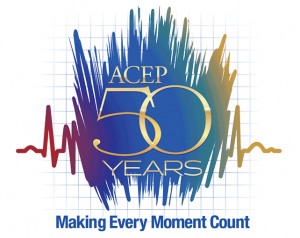 As part of our celebration of ACEP’s 50th anniversary, ACEP Now Medical Editor-in-Chief Kevin Klauer, DO, EJD, FACEP, recently sat down with ACEP Past President Gregory L. Henry, MD, FACEP, clinical professor in the department of emergency medicine at the University of Michigan Medical School in Ann Arbor, to discuss key moments in ACEP’s history and to consider what might be in store for ACEP’s future. Here are some highlights from their conversation.
As part of our celebration of ACEP’s 50th anniversary, ACEP Now Medical Editor-in-Chief Kevin Klauer, DO, EJD, FACEP, recently sat down with ACEP Past President Gregory L. Henry, MD, FACEP, clinical professor in the department of emergency medicine at the University of Michigan Medical School in Ann Arbor, to discuss key moments in ACEP’s history and to consider what might be in store for ACEP’s future. Here are some highlights from their conversation.
Explore This Issue
ACEP Now: Vol 37 – No 09 – September 2018KK: I’m so excited to culminate the 50th anniversary series with, you, Dr. Henry. You always have words of wisdom in many circumstances. Over the course of your time with ACEP, what are some notable points in history regarding the specialty?
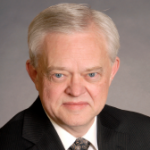
Dr. Greg Henry (Photo: ACEP)
GH: I remember those days [becoming a specialty] clearly because I was living in the Phi Rho Sigma medical fraternity house across the street from St. Joseph Mercy Hospital [in Ann Arbor]. One day in 1968, I went to the ED. The gentleman who would usually let me shadow him [George Fink, MD] was gone.
George had gone to Lansing to sign the papers for a new organization called ACEP. Things had changed in America since the end of the Second World War. There was huge mobility, and lots of people didn’t have doctors. We also learned that we needed to be proactive to change the outcome of certain diseases. Shakespeare said it best: “Diseases desperate grown by desperate appliance are relieved, or not at all.” The emergency departments in the United States had been staffed by fill-in people who were dermatologists, allergists, internal medicine, ob-gyns, etc., who took their turn in the barrel once every month or so. People were starting to realize that was the wrong way to do it. The first critical hour was where emergency care should concentrate its efforts.
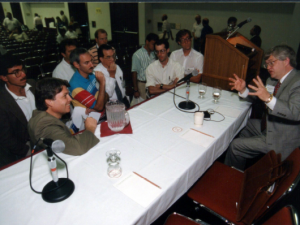
Dr. Henry speaks with ACEP members after a presentation.
KK: Knowing the criticisms that those initial founders received, what are some of the foundational pieces that helped us to be recognized and respected as a specialty?
GH: The first hurdle was psychological. You had to believe you were as good a doctor as anyone else. The second was that we needed a reasonable training process. The third thing was the first board examination in emergency medicine. We did it better than any other board at that point in time. We really looked at how questions were framed. Were they true discriminators of knowledge, and did they predict success, producing better doctors?
When we moved from being a conjoint board with family practice to a fully independent board, we’d come of age as the 23rd specialty board in the United States.
KK: Is there anything that either helped solidify the foundation of emergency medicine or attempted to destabilize it?
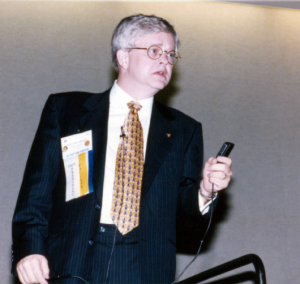
Dr. Henry speaking at past ACEP meetings.
GH: There was no specialty that ever grew as fast as emergency medicine. People saw that it was an intellectual challenge, needing excellent people. The paradox was that excellent people were needed in cities, which weren’t prominent academically. We were needed where the patients were, as one of the first specialties that was truly patient-centered.
As health care becomes more and more complex, our role in resource management and guiding policy is only going to increase. This reflects what citizens of the United States need to receive better health care.
KK: Greg, you’ve been described as the junkyard dog of emergency medicine, because you defended us tirelessly. Do you have a personal story you can share?
GH: One humorous story is about my daughter marrying the son of the chairman of radiology at Duke. This was, at first, an unholy alliance [emergency medicine and radiology], as might be expected. However, as we got more and more into this, the chairman, following insurmountable pressure, made sure that their ultrasonography people were going to train the emergency medicine residents exactly the same as he did the radiology residents. Perhaps, this helped to lessen some political barriers in training and access to point-of-care ultrasound.
As ACEP President, I represented us at the American College of Surgeons. Everyone sitting on the other side of the table from us was a professor at an ivory tower program. Almost none of them actually primarily saw patients. I pointed out, “The thing that you’re most afraid of is us taking your jobs, which is exactly what the surgeons want us to do in the community. They don’t want to be running in for anything unless they’re about to take them to the operating room.”
After we got our barbs, comments, and Shakespearean quotes out, they said, “You know, you may have something there and it may be important.” In the old days, all the trauma resuscitation stuff was under the control of surgery. Interestingly, that wasn’t where the surgeons were doing most of their research. Emergency physicians were initially caring for trauma in this country.
KK: Those who do not recognize history are doomed to repeat it. Do you see us revisiting history?
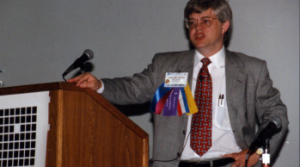
Dr. Henry speaking at past ACEP meetings.
GH: We went from, early after the Second World War, seeing 20 million emergency visits to now something around 140 million visits or more. We can’t rest on our laurels. We’ve built a specialty, but the work of the next half century is just beginning. Innovative care models are being contemplated and designed. I think that our people are superbly trained and experienced to handle many of these situations [eg, telemedicine]. If we don’t pursue this with the same vitality, we can be sucked up and blown away with the tide of history by other people who want to get into these areas as well.
I’m spending time with people who are looking at health care in America and why it’s costing us two or three times more to take care of patients than it costs elsewhere. They are asking important questions, which we should be anticipating. We need to be on the side of history, figuring out how to provide better care for less money, with less utilization of expensive technology.
KK: Where do you see emergency medicine in the future?
GH: We are going to have to evaluate the medical educational system. Many countries in the world do not send you for four years to get a degree before you start your medical training. What role will [physician assistants, nurse practitioners, emergency medical technicians,] etc.] play, and how should we guide this? I see emergency physicians of the future being more involved in thinking and providing opinions than just sewing up wounds. For example, physicians don’t need to repair most lacerations. The business world and consumers will continue to pose questions of value that we must be prepared to answer.
KK: Any words of wisdom for younger emergency physicians for a successful and fulfilling career?
GH: The best way that the young physician coming up can handle burnout is to like what you do for a living. I love my work and always have.
I think we need to start programming and help our young docs program themselves to have a logical progression of their career. You start out on midnights wrestling intoxicated patients. You may end up running a telemedicine service that covers half the state of Montana. The way we fight burnout and this feeling that we’re not accomplishing anything is to always have another goal, something we’re going to do to expand and revitalize our careers.
KK: Greg, any final thoughts?
GH: Well, I go back a long time. As you remember, I took care of Lincoln and that didn’t go well. If we become entrenched in how we do things without looking ahead to ask new questions, and we can’t define the goal as improving health care, then we’re on a road to nowhere. If we continuously look at what actually makes a difference in how patients turn out, then we’re going to be where we need to be to have both the American people and the house of medicine on our side.
Pages: 1 2 3 4 | Multi-Page




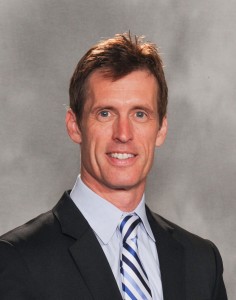
One Response to “Interview with ACEP Past President Gregory L. Henry, MD, FACEP”
October 2, 2021
Bones McCoy, MD, MPHDear ACEP/EPMG,
In the days working in Dr Henry’s maze of ER hospitals
up in North Michigan, we were treated as docs. The boards for qualifying in ER was MD/DO/AAPS that allowed
folks to qualify if trained in another residency field.
I told Dr. Henry I would take the AAPS route as they were based on hours in ER+ a residency in primary care.
In Florida I finished a primary care training and worked in ER w/out any credentialing issues. But,soon afterwords AAPS was not being accepted other than FL/TX
and a few rural arenas. FYI for future ER docs.